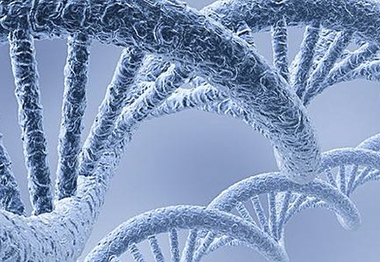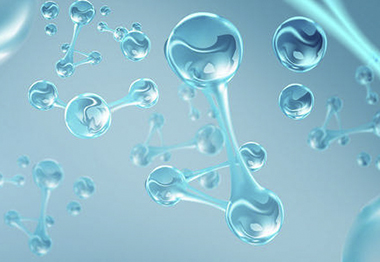




2021-05-19

2017-09-04

2020-12-27

2021-01-22

2021-01-25

2021-01-26
In use, it will be stained with dirt such as greasy, glue and sweat, and rust and mildew will occur when it is stored carelessly. These dirt will have an extremely adverse impact on the service life and performance of the instrument. The purpose of cleaning is to remove the dirt on the instrument.
Generally, there are two methods for instrument cleaning:
(1 )Mechanical cleaning method, i.e. cleaning with shovel, scraper, brush, etc;
(2)Chemical cleaning method, i.e. cleaning with various chemical decontamination solvents. The specific cleaning method shall be determined according to the condition of dirt attached to the surface and the nature of dirt. The cleaning methods of several common instruments and parts of different materials are introduced below;
1. Cleaning of glassware
Glassware is divided into general glassware and special glassware. The dirt attached to glassware can be cleaned with water, and the dirt must be cleaned with detergent or special detergent. In the experiment, no matter what kind of dirt is attached to the glassware, the used glassware should be cleaned immediately. Glassware containing sugar, salt, starch, mud, sand, alcohol and other substances can be washed with water to achieve the purpose of cleaning. It should be noted that if the attached dirt is dry and hard, soak the vessel in water for a period of time, and then wash and brush with a brush until it is cleaned. Glassware stained with oil or containing animal and vegetable oil can be cleaned with washing powder, decontamination powder, detergent and detergent. When cleaning, brush with a brush. This detergent can also be used to clean glassware with engine oil. After washing glassware with detergent, it shall also be washed with clean water. Glassware with tar, asphalt or other high molecular organics shall be cleaned with organic solvents, such as gasoline and benzene. If it is still difficult to clean, the glassware can be soaked in alkaline detergent for a period of time, and then cleaned with solutions such as sodium carbonate, sodium bicarbonate, sodium hydroxide or sodium phosphate with a concentration of more than 5%, or even heated. In chemical reaction, metal, oxide, acid, alkali and other dirt are often attached to the wall of glassware. During cleaning, according to the characteristics of the dirt, clean it with strong acid and alkali or use the method of neutralization chemical reaction to remove the dirt, and then rinse it with water. When using acid-base cleaning, special attention shall be paid to safety. The operator shall wear rubber gloves and protective glasses. During operation, tweezers, clips and other tools shall be used, and vessels shall not be taken and placed by hand. Mildew on the surface of optical glass is a common phenomenon. When the optical glass is moldy, the light will scatter on its surface, making the imaging blurred. In serious cases, the instrument will be scrapped. The reason why optical glass is moldy is that there are microbial spores on its surface. When the temperature and humidity are appropriate and "nutrients" are needed, it will grow rapidly and form mildew spots. It is particularly important to do a good job in mildew and antifouling of optical glass. Once mildew spots occur, they should be cleaned immediately. To eliminate mildew, the mold can be cleaned with a cleaning agent prepared by 0.1 ~ 0.5% ethyl hydrogen containing dichlorosilane and anhydrous alcohol. In wet weather, a small amount of should be added, or cleaned with propylene oxide, dilute ammonia, etc. The above cleaning agent can also be used to clean the grease fog, water wet fog and oil-water mixed fog on the optical glass.
2. Cleaning of rubber parts:
There are many parts made of rubber in the experimental instrument. As a kind of high molecular organic matter, rubber will age after being stained with greasy or organic solvent, resulting in deformation, softness and viscosity of parts; If the transmission belt made of rubber is stained with oil, the friction coefficient will be reduced and slip will occur.
Alcohol and carbon tetrachloride can be used as cleaning agents to clean oil stains on rubber parts, rather than organic solvents. When cleaning, wipe with cotton ball or silk cloth dipped in cleaning agent, and wait until the cleaning agent volatilizes naturally. It should be noted that carbon tetrachloride is toxic and harmful to human body. Cleaning should be carried out under good ventilation conditions and pay attention to safety.
There are metal, oxide, acid, alkali and other dirt. During cleaning, according to the characteristics of the dirt, clean it with strong acid and strong alkali or use the method of neutralizing chemical reaction to remove the dirt, and then rinse it with water. When using acid-base cleaning, special attention shall be paid to safety. The operator shall wear rubber gloves and protective glasses. During operation, tweezers, clips and other tools shall be used, and vessels shall not be taken and placed by hand.
Mildew on the surface of optical glass is a common phenomenon. When the optical glass is moldy, the light will scatter on its surface, making the imaging blurred. In serious cases, the instrument will be scrapped.
The reason why optical glass is moldy is that there are microbial spores on its surface. When the temperature and humidity are appropriate and "nutrients" are needed, it will grow rapidly and form mildew spots. It is particularly important to do a good job in mildew and antifouling of optical glass. Once mildew spots occur, they should be cleaned immediately. To eliminate mildew, the mold can be cleaned with a cleaning agent prepared by 0.1 ~ 0.5% ethyl hydrogen containing dichlorosilane and anhydrous alcohol. In wet weather, a small amount of should be added, or cleaned with propylene oxide, dilute ammonia, etc. The above cleaning agent can also be used to clean the grease fog, water wet fog and oil-water mixed fog on the optical glass.